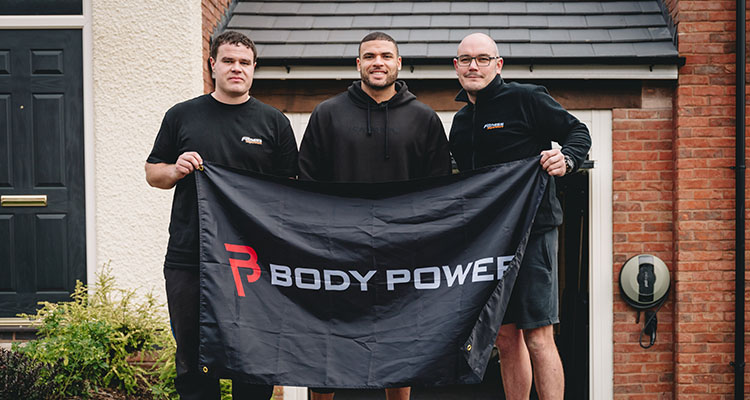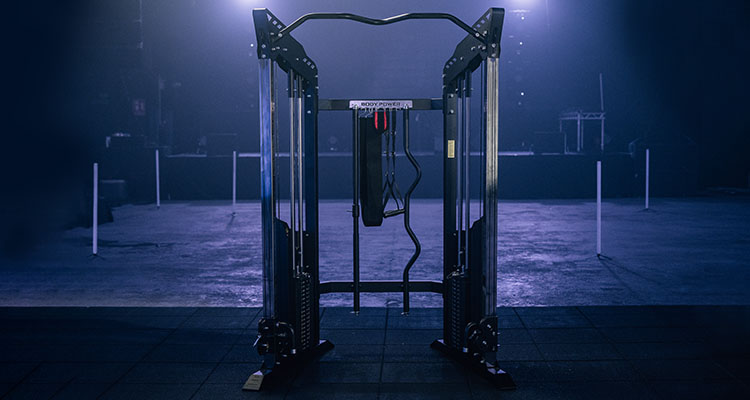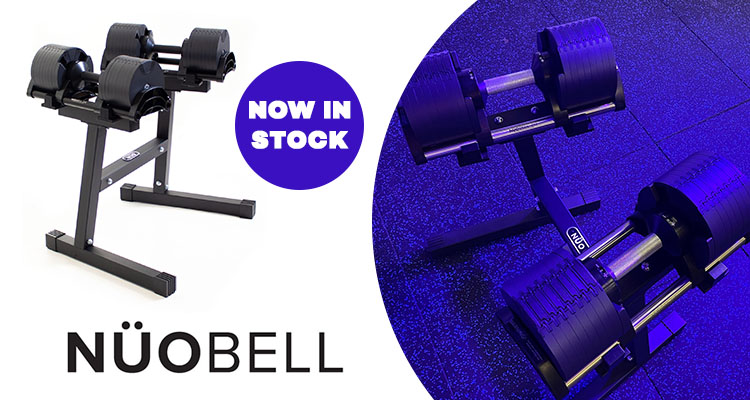Fitness Jargon Buster

Do you know your HIIT from your DOMS? Your aerobic from your anaerobic? With new training methods and workout crazes being invented all the time, it can be hard to keep up with it all. We thought we’d pull together all the fitness-related terminology we could think of and set it out in one handy place, here on the blog. It’s time to decode the abbreviations and make sense of the buzz words!

 CV/Cardio – Cardiovascular Exercise. This is any activity that gets your heart rate to about 50 – 75% of your maximum heart rate. Running is the most obvious type of exercise referred to as “cardio” but cardio training can be undertaken in various ways, such as cycling, swimming, circuit training, via HIIT workouts, or using fitness equipment such as cross trainers or rowing machines.
DMT – Dynamic Movement Training. A fairly new phenomenon, DMT combines cardio and strength training. This type of workout is proven to demand more energy and improve muscle activation, which ultimately results in greater results in less time.
CV/Cardio – Cardiovascular Exercise. This is any activity that gets your heart rate to about 50 – 75% of your maximum heart rate. Running is the most obvious type of exercise referred to as “cardio” but cardio training can be undertaken in various ways, such as cycling, swimming, circuit training, via HIIT workouts, or using fitness equipment such as cross trainers or rowing machines.
DMT – Dynamic Movement Training. A fairly new phenomenon, DMT combines cardio and strength training. This type of workout is proven to demand more energy and improve muscle activation, which ultimately results in greater results in less time.
 Plank – An exercise for the core, this involves holding yourself in position with your forearms and toes on the ground. Why called a plank? Because that’s what your body resembles when in this position!
Plank – An exercise for the core, this involves holding yourself in position with your forearms and toes on the ground. Why called a plank? Because that’s what your body resembles when in this position!
 PT – Personal Trainer.
Form – The act of performing an exercise correctly. As they say, quality over quantity. It’s no use performing 50 dead lifts if your form is incorrect. Poor form prevents your muscles from being worked appropriately and could lead to injury.
GX/GEX – Group Exercise.
Plateau – You might hear someone say they’ve “plateaued” with their training. Basically, it’s when you’re no longer seeing any gains from your exercise. Our bodies get used to exercise routines, so mixing up our training methods is integral to progression. It’s important to get the right balance though – mixing it up too frequently can also result in a lack of progression.
Anabolic – The process of building muscle mass with growth and repair. This is the growth stage and is achieved through fuelling the body with repairing nutrients and rest.
PT – Personal Trainer.
Form – The act of performing an exercise correctly. As they say, quality over quantity. It’s no use performing 50 dead lifts if your form is incorrect. Poor form prevents your muscles from being worked appropriately and could lead to injury.
GX/GEX – Group Exercise.
Plateau – You might hear someone say they’ve “plateaued” with their training. Basically, it’s when you’re no longer seeing any gains from your exercise. Our bodies get used to exercise routines, so mixing up our training methods is integral to progression. It’s important to get the right balance though – mixing it up too frequently can also result in a lack of progression.
Anabolic – The process of building muscle mass with growth and repair. This is the growth stage and is achieved through fuelling the body with repairing nutrients and rest.
 BMR – Basal Metabolic Rate. This is the number of calories your body burns per day while at complete rest and the minimum number of calories you need to sustain life.
Hypertrophy - An increase in muscle mass and an improvement in relative muscular strength. This is the opposite of atrophy, which is the loss or decrease of muscle mass.
After Burn/After Burn Effect – Technically speaking, this is “excess post-exercise oxygen consumption”. And what does that mean? Basically, the more intense the exercise you perform, the more oxygen your body consumes afterwards, which is a process that burns calories. This is why HIIT is championed for its after burn effect as it requires you to work intensely.
Have we missed anything? Let us know in the comments or tweet us!
BMR – Basal Metabolic Rate. This is the number of calories your body burns per day while at complete rest and the minimum number of calories you need to sustain life.
Hypertrophy - An increase in muscle mass and an improvement in relative muscular strength. This is the opposite of atrophy, which is the loss or decrease of muscle mass.
After Burn/After Burn Effect – Technically speaking, this is “excess post-exercise oxygen consumption”. And what does that mean? Basically, the more intense the exercise you perform, the more oxygen your body consumes afterwards, which is a process that burns calories. This is why HIIT is championed for its after burn effect as it requires you to work intensely.
Have we missed anything? Let us know in the comments or tweet us!

EXERCISE METHODS
Tabata – Like HIIT, this is a time-interval method of training, and can be applied to pretty much any exercise. It’s broken down into 20 seconds of exercise and 10 seconds of rest, which is repeated 8 times. Perfect for maximising calorie burn in minimal time. CrossFit – Founded by Greg Glassman, “CrossFit” involves performing constantly varied functional movements at high intensity. Plyometrics – Plyometrics, “plyo” or “jump training” as it’s also known, focuses on using maximum force with explosive movements, meaning muscles work at almost full capacity for a very short amount of time. The goal is to increase both speed and power. Box jumps are a good example of plyo training. Functional training – Exercises that help with everyday living, such as bending, stretching and lifting. These exercises are commonly performed using just your own body weight as resistance. Circuit Training - A workout technique which involves moving quickly from one exercise to another and doing a set number of exercises at each “station”. A very popular exercise class in gyms and at fitness boot camps. Aerobic – Low to slightly elevated intensity exercise that keeps your heart at 60-80% of its max rate. Anaerobic – High intensity “power” exercise where the heart rate exceeds the 80% max rate. HIIT – High Intensity Interval Training. HIIT is a training technique which combines fast, intense bursts of high intensity exercise followed by short recovery periods. HIIT workouts are performed in a shorter amount of time than regular exercise (usually between 10-30 minutes) and are rated as a highly effective way to achieve maximum fat burn in less time. CV/Cardio – Cardiovascular Exercise. This is any activity that gets your heart rate to about 50 – 75% of your maximum heart rate. Running is the most obvious type of exercise referred to as “cardio” but cardio training can be undertaken in various ways, such as cycling, swimming, circuit training, via HIIT workouts, or using fitness equipment such as cross trainers or rowing machines.
DMT – Dynamic Movement Training. A fairly new phenomenon, DMT combines cardio and strength training. This type of workout is proven to demand more energy and improve muscle activation, which ultimately results in greater results in less time.
CV/Cardio – Cardiovascular Exercise. This is any activity that gets your heart rate to about 50 – 75% of your maximum heart rate. Running is the most obvious type of exercise referred to as “cardio” but cardio training can be undertaken in various ways, such as cycling, swimming, circuit training, via HIIT workouts, or using fitness equipment such as cross trainers or rowing machines.
DMT – Dynamic Movement Training. A fairly new phenomenon, DMT combines cardio and strength training. This type of workout is proven to demand more energy and improve muscle activation, which ultimately results in greater results in less time.
MOVES
Burpees – a physical exercise consisting of a squat thrust made from and ending in a standing position. It’s a full body exercise that incorporates a plank, push-up, squat and jump. Check out how to perform a burpee courtesy of Bowflex. Reps – Repititions. A rep is the number of times you perform an exercise before resting. Therefore, one squat = one rep. Sets – A set is a group of repetitions completed without rest. So, you might perform two sets of bicep curls with each set made up of 12 reps, for example. Drop Sets – This strength training technique involves switching to a lighter weight mid-set when your muscles get tired, rather than stopping altogether. Forced Reps – These are reps performed at the end of a set, which require the help of a spotter. Basically, it’s when your muscles are pretty much at “failure” point. It’s a tactic for extra gains in terms of strength and power. Superset – Performing sets of two different exercises back to back without rest. Isolation Exercises – These exercises target just one muscle group. Bicep curls are the perfect example. Compound Exercises – Opposite to Isolation Exercises, you use more than one group of muscles at a time. Exercises like squats, bench presses and dead lifts are all examples of compound exercises. Dead lift – A dead lift is a weight training exercise whereby a loaded barbell is lifted off the ground to the hips, then lowered back to the ground. Plank – An exercise for the core, this involves holding yourself in position with your forearms and toes on the ground. Why called a plank? Because that’s what your body resembles when in this position!
Plank – An exercise for the core, this involves holding yourself in position with your forearms and toes on the ground. Why called a plank? Because that’s what your body resembles when in this position!
FITNESS LINGO
WOD – Workout of the Day. PB – Personal Best. Gains – A word to express how well you’re doing within your work out regime. You might hear someone refer to “their gains”. Often, this is in reference to gaining muscle through weight/resistance training, but your gains could also refer to achieving a new personal best or losing weight. In a way, it’s another word for goals or progress. Performing to “failure” – Failure occurs when you’ve worked so hard that your muscle (or muscles) can’t complete one more repetition of an exercise while maintaining proper form. Pushing your limits is well worth the effort if you want to increase strength and tone up. Tekkers – “Technique”. Spot/spotter – To “spot” someone is to aid them in their workout. Commonly used in weightlifting, a “spotter” will stand very close to you and will help you if you struggle to complete the set. PT – Personal Trainer.
Form – The act of performing an exercise correctly. As they say, quality over quantity. It’s no use performing 50 dead lifts if your form is incorrect. Poor form prevents your muscles from being worked appropriately and could lead to injury.
GX/GEX – Group Exercise.
Plateau – You might hear someone say they’ve “plateaued” with their training. Basically, it’s when you’re no longer seeing any gains from your exercise. Our bodies get used to exercise routines, so mixing up our training methods is integral to progression. It’s important to get the right balance though – mixing it up too frequently can also result in a lack of progression.
Anabolic – The process of building muscle mass with growth and repair. This is the growth stage and is achieved through fuelling the body with repairing nutrients and rest.
PT – Personal Trainer.
Form – The act of performing an exercise correctly. As they say, quality over quantity. It’s no use performing 50 dead lifts if your form is incorrect. Poor form prevents your muscles from being worked appropriately and could lead to injury.
GX/GEX – Group Exercise.
Plateau – You might hear someone say they’ve “plateaued” with their training. Basically, it’s when you’re no longer seeing any gains from your exercise. Our bodies get used to exercise routines, so mixing up our training methods is integral to progression. It’s important to get the right balance though – mixing it up too frequently can also result in a lack of progression.
Anabolic – The process of building muscle mass with growth and repair. This is the growth stage and is achieved through fuelling the body with repairing nutrients and rest.
THE SCIENCE STUFF
DOMS – Delayed Onset Muscle Soreness. Also known as muscle fever, DOMS is the pain felt in muscles several hours to days after strenuous exercise. Macros – Macronutrients. These are what make up the caloric content of a food, and are primarily responsible for producing the energy that the human body uses to move, breathe etc. They are made up of three categories: protein, carbohydrates and fats. (It’s four if you count alcohol.) You may hear people talk of their “macros diet” or “counting macros.” Here’s all you need to know about macros. Empty Calories – Calories mostly devoid of nutritional value. Usually high in sugar and over-processed. BMI – Body Mass Index. BMI is a measure of body fat based on your weight in relation to your height. In general terms, taller people tend to weigh more so BMI aims to establish whether or not you’re a healthy weight for your height. BMI is calculated by dividing your weight in kg by your height in metres and then dividing that answer by your height again. A BMI between 18.5 and 24.9 is considered healthy. Although it can be viewed as a relatively reliable measurement for most people, there are arguments very much against it as it fails to consider muscle mass, bone density and overall body composition. BMR – Basal Metabolic Rate. This is the number of calories your body burns per day while at complete rest and the minimum number of calories you need to sustain life.
Hypertrophy - An increase in muscle mass and an improvement in relative muscular strength. This is the opposite of atrophy, which is the loss or decrease of muscle mass.
After Burn/After Burn Effect – Technically speaking, this is “excess post-exercise oxygen consumption”. And what does that mean? Basically, the more intense the exercise you perform, the more oxygen your body consumes afterwards, which is a process that burns calories. This is why HIIT is championed for its after burn effect as it requires you to work intensely.
Have we missed anything? Let us know in the comments or tweet us!
BMR – Basal Metabolic Rate. This is the number of calories your body burns per day while at complete rest and the minimum number of calories you need to sustain life.
Hypertrophy - An increase in muscle mass and an improvement in relative muscular strength. This is the opposite of atrophy, which is the loss or decrease of muscle mass.
After Burn/After Burn Effect – Technically speaking, this is “excess post-exercise oxygen consumption”. And what does that mean? Basically, the more intense the exercise you perform, the more oxygen your body consumes afterwards, which is a process that burns calories. This is why HIIT is championed for its after burn effect as it requires you to work intensely.
Have we missed anything? Let us know in the comments or tweet us!








